The picturesque city of Split, renowned for its stunning architecture and rich history, faces a delicate challenge that requires immediate attention: the management of natural risks. As a city cradled along the Adriatic coast, Split enjoys the beauty of the sea but also stands vulnerable to the looming threat of flooding. Researchers and local authorities have identified multiple natural hazards affecting the region, including river flooding and coastal erosion, posing challenges that extend beyond simple inconvenience. This article delves into the complexities of these risks, exploring impactful solutions while shedding light on the multifaceted nature of environmental threats affecting Split.
Understanding the Risk of River Flooding in Split
Split is located in an area where river flood hazards are classified as high. This classification is based on comprehensive modeling and analysis, predicting potentially damaging and life-threatening floods with expectations of occurring at least once in the next decade. River flooding in the Split-Dalmatija region can result from excessive rainfall, snowmelt, or man-made alterations to the natural watercourses, exacerbating the frequency and severity of these events.
Historical data suggests that flooding has been a recurring issue for Split. As part of a larger analysis conducted by JRC scientists, multiple European regions, including Split, have been identified as susceptible to river flooding. These findings underscore the importance of addressing both natural and human-induced factors that amplify flood risks.
To tackle these challenges, a comprehensive approach involving modern technologies and strategic planning is essential. For instance, implementing FloodGuard systems that utilize real-time monitoring and alert mechanisms can significantly enhance the city’s preparedness. Such systems are designed to provide timely warnings, enabling both residents and authorities to take appropriate measures to mitigate damage.
- 🌧️ Efficient drainage systems to channel excess water away from urban areas.
- 🌧️ Regular maintenance of riverbanks to prevent erosion and overflow.
- 🌧️ Integration of AquaShield barriers in critical areas to hold back floodwaters.
- 🌧️ Development of community awareness programs to educate residents on emergency procedures.
By focusing on sustainable practices and infrastructure improvements, Split can enhance its resilience against river flooding. These solutions not only aim to protect the city’s population and infrastructure but also preserve the natural beauty and heritage of this historical region.
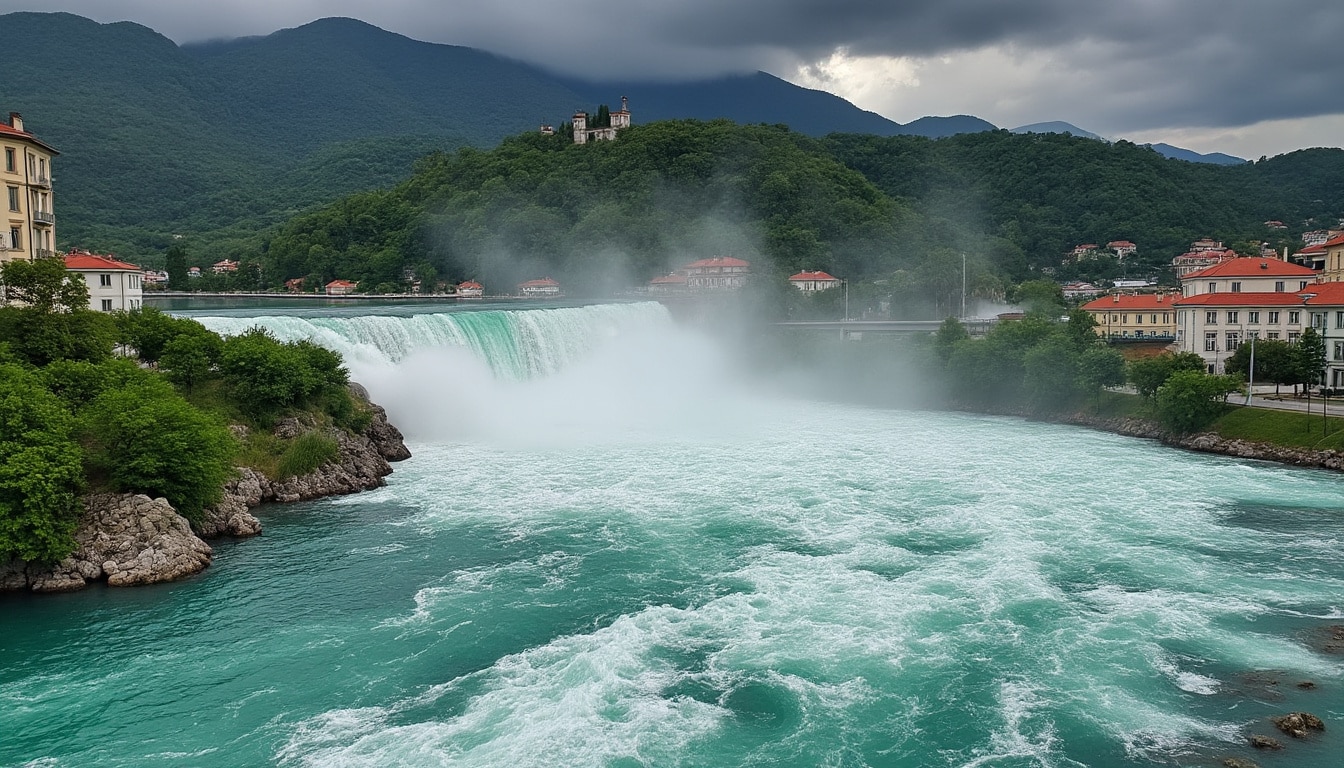
Case Studies of Effective Flood Management
Several European cities have successfully implemented measures to combat river flooding, serving as valuable examples for Split. For instance, the city of Rotterdam in the Netherlands has integrated HydroProtect technologies into their urban planning. This includes the creation of water squares that double as public spaces during dry periods but transform into temporary water storage during heavy rainfall.
Similarly, Vienna has adopted EcoFlood Solutions focusing on river expansion projects to accommodate excess water flows without compromising the city’s infrastructure. These projects involve carefully planned adjustments to the river’s natural course, thus reducing pressure on existing flood defenses.
These case studies highlight the importance of innovation and community participation in enhancing flood prevention and response, offering valuable insights for Split as it grapples with its own flooding challenges.
Coastal Erosion and Its Impact on Split’s Environment
The stunning coastline of Split is not only a tourist attraction but also an area of environmental concern due to ongoing coastal erosion. Factors such as rising sea levels and intensified storm activities have accelerated the erosion process, posing significant risks to both natural habitats and coastal infrastructure.
The issue of coastal erosion is further complicated by human activities, including construction and inadequate waste management, which have altered natural sediment flows. As a result, critical ecosystems such as beaches and dunes are under threat, affecting biodiversity and the region’s ecological balance.
Addressing coastal erosion requires an integrated approach that combines scientific research with practical interventions. Here are some strategies to consider:
- 🏖️ Implementation of StormSafe Systems to strengthen coastal defenses against storm surges.
- 🏖️ Use of natural vegetation to stabilize sand dunes and prevent erosion.
- 🏖️ Development of sustainable tourism practices that minimize environmental impact.
- 🏖️ Collaboration with international bodies to share knowledge and resources.
Innovative solutions like coastal nourishment and the use of artificial reefs have proven effective in other regions. Building on these successes, Split can fortify its coastline to withstand the pressures of climate change while preserving its unique natural beauty.
Technology and Community Engagement in Erosion Control
Modern technology plays a crucial role in monitoring and combating coastal erosion. Tools such as FloodWatch enable real-time surveillance of coastal changes, providing valuable data that inform policy decisions and mitigation efforts.
Community engagement is equally vital, as local residents are often the first to notice changes in coastal conditions. Initiatives that encourage public participation in erosion control efforts foster a sense of stewardship and are essential for sustainable outcomes.
By adopting a holistic approach that combines technology and community involvement, Split can effectively combat coastal erosion while enhancing its resilience to natural risks.
Urban Planning and Infrastructure Development in Split
Urban expansion in Split, a hallmark of its economic and cultural growth, also presents challenges in terms of flood risk management. As the city grows, so does the need for infrastructures that can withstand natural hazards. The strategic placement and design of urban spaces play an essential role in mitigating risks associated with both floods and erosion.
A key component of this urban strategy is the adoption of FloodSmart Technologies, which encompass a range of innovations from flood-resistant construction materials to advanced stormwater systems. These technologies not only protect infrastructure but also enhance the adaptability of urban environments to climatic variations.
Integrating these technologies involves several steps:
- 🏢 Designing buildings with elevated foundations to avoid flood damage.
- 🏢 Installing permeable pavements to improve drainage.
- 🏢 Incorporating green roofs to reduce stormwater runoff.
- 🏢 Creating floodplain zoning ordinances to control development in high-risk areas.
The synergy between urban development and flood management can transform Split into a model city that balances progress with environmental stewardship. This transformation is not just about technology but also requires active collaboration between government entities, private sectors, and local communities.
Examples of Innovative Urban Solutions
Copenhagen is an exemplar in integrating flood management with urban design. The city has implemented RainSafe solutions that incorporate blue and green infrastructure — such as man-made rivers and green spaces — that absorb rainwater, lessening the likelihood of flooding.
In Split, approaches like these can offer dual benefits. They address immediate threats posed by heavy rainfall and support the city’s broader sustainability goals by promoting greener, more livable urban environments.
International Cooperation and Future Trends in Natural Risk Management
As the risks associated with flooding and natural disasters increase globally, international cooperation becomes more essential. Split’s efforts to manage these risks are part of a broader trend where cities around the world are sharing insights and resources to tackle common challenges. Initiatives like FloodSmart Technologies Symposiums foster dialogue and innovation across borders.
Future trends in natural risk management are characterized by the integration of advanced technologies, such as GIS and remote sensing, in hazard assessment. These tools are essential for developing predictive models that can forewarn of potential natural disasters, allowing for proactive measures.
Key future trends include:
- 🌍 Greater use of satellite data to monitor environmental changes in real-time.
- 🌍 Development of comprehensive databases for sharing flood-related data among nations.
- 🌍 Increased collaboration on regional mitigation strategies through EU and international partnerships.
- 🌍 Enhancement of cross-sectoral approaches combining public policy, engineering, and environmental science.
Through embracing these trends and participating in global initiatives, Split not only protects itself but contributes to the advancement of natural risk management practices worldwide.
Challenges and Opportunities
The journey toward enhanced natural risk management in Split is fraught with challenges, yet it is also ripe with opportunities. Balancing urban development with environmental conservation requires innovative thinking and sustained commitment from all stakeholders involved. Emerging technologies and global partnerships provide a framework within which effective, sustainable solutions can be developed.
Despite the difficulties, Split’s commitment to addressing natural risks is a testament to the city’s forward-thinking mindset. By fostering an environment of learning and adaptation, Split stands to become a beacon of resilience in the face of growing environmental challenges.
FAQs
What are the main natural hazards threatening Split?
Split primarily faces risks from river flooding, coastal erosion, and, to a lesser extent, landslides and subsidence.
How is Split improving its flood management systems?
Split has integrated advanced technologies like FloodGuard and HydroProtect, focusing on efficient drainage systems and enhanced urban planning.
How does urban planning play a role in minimizing flood risks?
Urban planning helps by controlling development in high-risk areas, using flood-resistant designs, and incorporating natural drainage solutions.
How can the community in Split participate in risk management?
Residents can engage in community awareness programs, support sustainable practices, and participate in local decision-making processes regarding urban planning and environmental conservation.
What role does international cooperation play in managing natural risks?
International cooperation facilitates the sharing of data, resources, and strategies, allowing cities like Split to adopt the best practices in natural risk management and disaster preparedness.
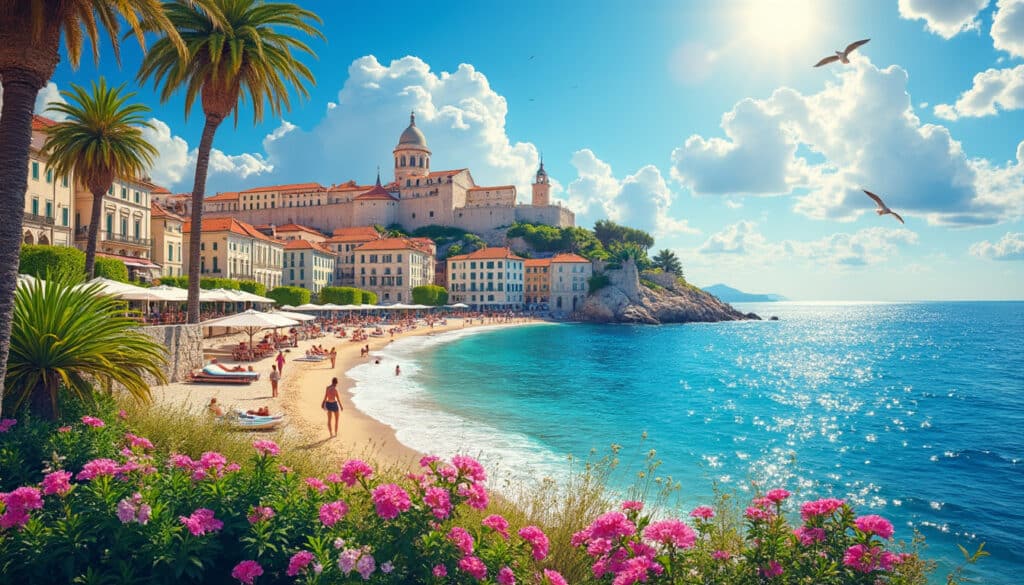
Embracing the picturesque views of the Dalmatian Coast, Split is not only a haven for history enthusiasts but also an intriguing destination due to its unique Mediterranean climate. This city perfectly combines cultural richness with weather nuances, offering a spectrum…
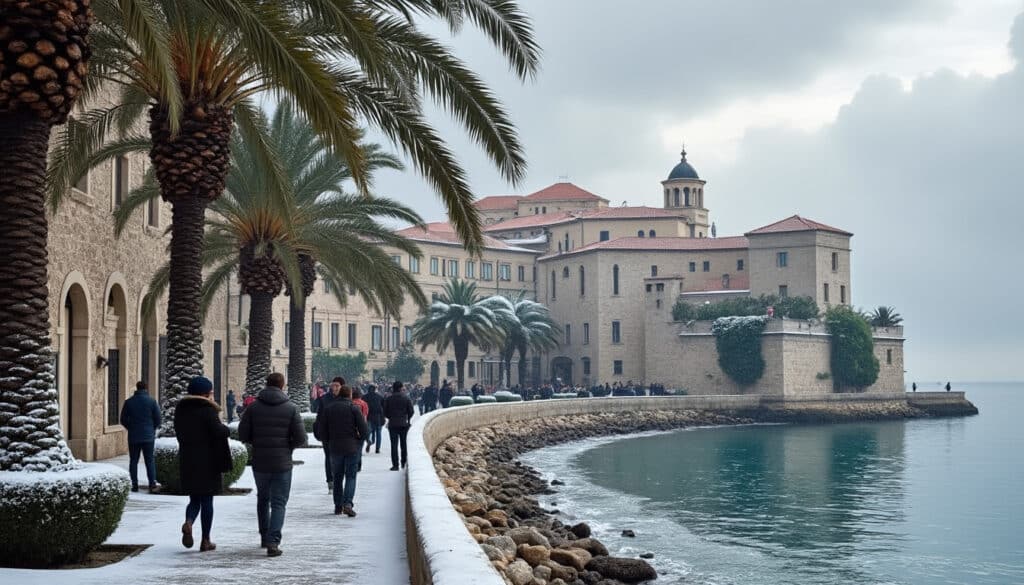
While Split, Croatia is widely celebrated for its radiant summers with tourists flocking to its historic sites and fetching beaches, the cold weather presents a different yet equally captivating charm. As a local guide with a keen interest in history,…
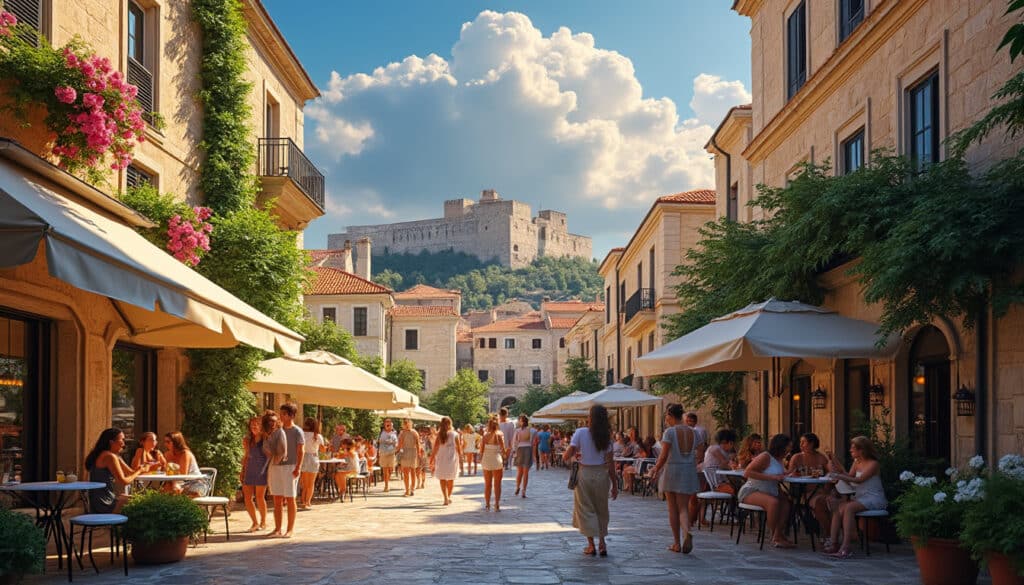
Split, Croatia is a city known for its stunning coastal views, rich history, and vibrant culture. Situated on the eastern shore of the Adriatic Sea, this picturesque location is not only famous for its architectural wonders and buzzing seafront but…

Is Split warm throughout the year?
Situated along the picturesque Adriatic coastline, Split, Croatia, is often heralded for its warm climate that seems to envelop the city with a perennial embrace. Let’s dive deep into understanding whether Split is indeed warm throughout the year and what…

Rain and precipitation in Split
Split, the charming city located along the Dalmatian Coast in Croatia, is known for its vibrant culture, historical sites, and scenic beauty. But aside from its cultural significance, the weather patterns, including rain and precipitation, play a vital role in…

Nestled along the azure Adriatic Coast, Split offers a distinct charm that varies with each season. Whether you’re drawn to the sun-drenched beaches in the height of summer or the tranquil ambiance of its less crowded months, Split promises an…
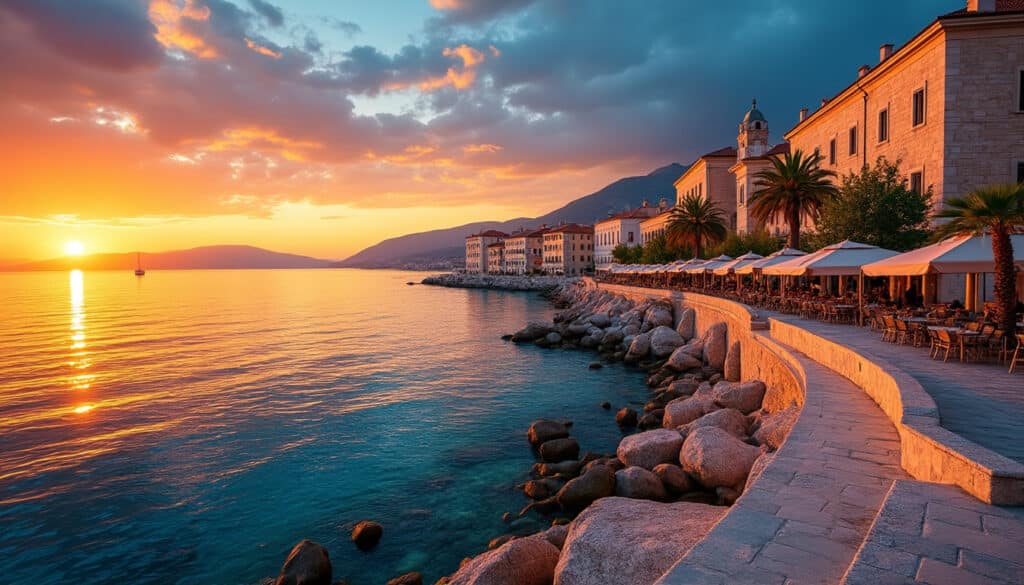
Split, a picturesque city along the Croatian Adriatic coast, is renowned not only for its stunning ancient architecture and vibrant culture but also for its breathtaking sunrises. The strategic location of Split, nestled between the blue of the sea and…
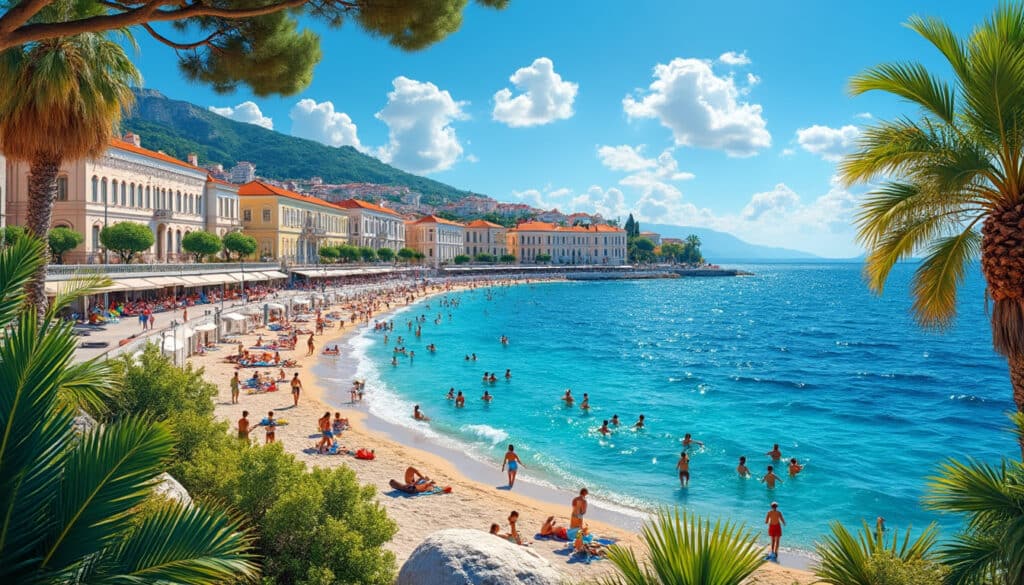
What is the weather like in Split?
Split, one of Croatia’s most vibrant coastal cities, is renowned not only for its rich cultural heritage and stunning landscapes but also for its unique climate. Travelers and residents often find themselves captivated by the mild and pleasant weather that…
Split, a picturesque city perched on the Dalmatian Coast of Croatia, is renowned for its stunning blend of ancient history and vibrant modern life. For both locals and tourists, understanding the nuances of its weather is crucial in ensuring a…
In Split, a city that gracefully hugs the Dalmatian coast, the heat of summer is not just a season but a vibrant experience. The panoramic views of the Adriatic, coupled with historic charm, render Split a captivating location. Summers are…



